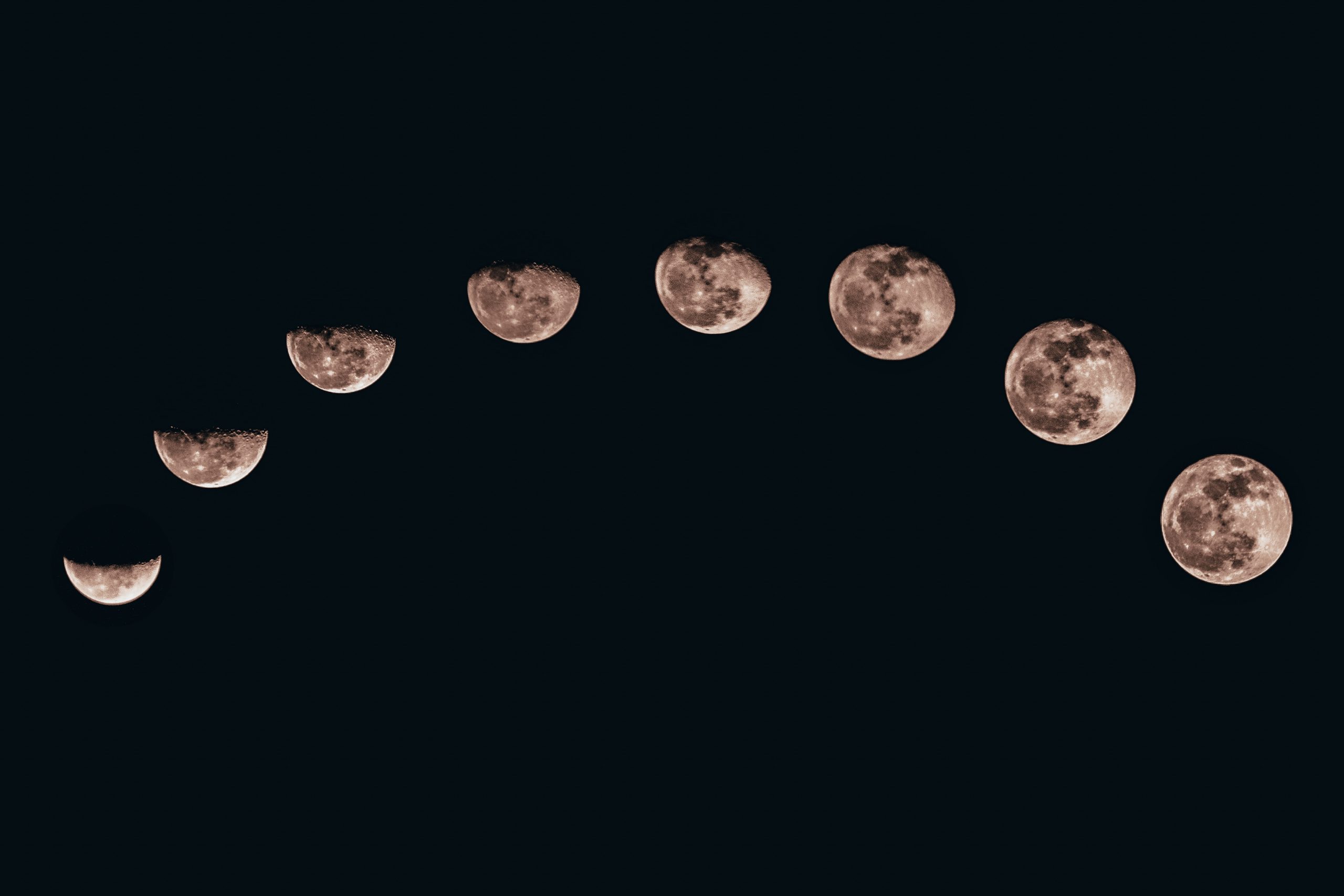Moon Phases, Eclipses, and Tides: Understanding the Celestial Dance
The moon has captivated humanity since the dawn of time. Its mysterious glow in the night sky, changing shapes, and its influence on tides have sparked curiosity and wonder for generations. In this blog post, we will explore the fascinating interplay between moon phases, eclipses, and tides, unraveling the secrets of our celestial neighbor. So, buckle up and embark on this astral journey!
Table of Contents
Moon Phases
The moon’s phases refer to its appearance as it orbits around the Earth. As the moon orbits, the relative positions of the Earth, moon, and the sun produce the different phases we observe from Earth.
There are eight distinct moon phases in a lunar month:
| Phase | Description |
|---|---|
| New Moon | The moon is completely dark, not visible from Earth. |
| Waxing Crescent | A small sliver of the moon’s right side begins to illuminate. |
| First Quarter | Exactly half of the moon is illuminated. |
| Waxing Gibbous | The majority of the moon’s right side is now illuminated. |
| Full Moon | The moon appears as a fully illuminated disk. |
| Waning Gibbous | The majority of the moon’s left side is now illuminated. |
| Last Quarter | Exactly half of the moon is illuminated, but on the left side. |
| Waning Crescent | A small sliver of the moon’s left side continues to illuminate. |
The cycle of these moon phases repeats every 29.5 days, which is known as a synodic month.
Lunar Eclipses
A lunar eclipse occurs when the Earth comes between the sun and the moon, casting a shadow on the moon and creating a spectacular celestial event. During a lunar eclipse, the Earth’s shadow can give the moon a reddish hue, often referred to as a “blood moon.”
Lunar eclipses are mesmerizing to witness, but they only occur during a full moon. The alignment of the sun, Earth, and moon needs to be precise to create this unique spectacle. Interestingly, lunar eclipses can only happen when the moon is below or above Earth’s orbital plane, primarily due to the moon’s tilted orbit.
While lunar eclipses are relatively safe to observe, it’s essential to protect your eyes when observing solar eclipses, as we’ll discuss next.
Solar Eclipses
Solar eclipses are undoubtedly one of the most captivating natural phenomena. They occur when the moon passes between the Earth and the sun, temporarily blocking the sun’s light from reaching certain regions on Earth.
Unlike lunar eclipses, solar eclipses are more precarious to observe without proper eye protection. Staring at the sun during an eclipse can cause severe damage to your eyes, including blindness. To safely watch a solar eclipse, special solar filters or eclipse glasses are required to protect your eyes from harmful rays.
There are three main types of solar eclipses:
- Partial Solar Eclipse: The moon partially covers the sun’s disk, creating a stunning crescent shape in the sky.
- Total Solar Eclipse: The moon completely blocks the sun, resulting in an awe-inspiring moment of total darkness during daytime.
- Annular Solar Eclipse: The moon is directly in line with the sun, but its apparent size is slightly smaller, creating a “ring of fire” effect as the sun’s outer edges remain visible.
Solar eclipses are relatively rare events and offer a unique opportunity to witness the cosmic ballet of our solar system.
Tides
Tides are the rise and fall of sea levels caused by the gravitational forces of the moon and the sun on Earth’s oceans. The moon plays the dominant role in creating tides due to its closer proximity and stronger gravitational pull compared to the sun.
There are two primary types of tides:
- Spring Tides: Spring tides occur during the new moon and full moon phases when the sun, Earth, and moon align, resulting in higher high tides and lower low tides. The gravitational forces of the sun and moon reinforce each other during these periods.
- Neap Tides: Neap tides occur during the first and third quarter moon phases when the sun, Earth, and moon form a right angle. Neap tides have lower high tides and higher low tides compared to spring tides.
Tides affect coastal areas and estuaries, influencing activities such as fishing, navigation, and beach recreation. Understanding tidal patterns is crucial for coastal communities and marine industries.
Reading Comprehension Questions
Are you ready to test your understanding? Here are some reading comprehension questions to assess your grasp on the topic:
- What causes the phases of the moon?
- Which type of eclipse is observable during a full moon?
- Why should you never look directly at the sun during a solar eclipse?
- What are the two primary types of tides?
- How often do lunar eclipses occur?
Take your time and reflect on these questions. If you’re unsure of any answers, feel free to revisit the corresponding sections above. Discover the wonders of our cosmic playground, and let your curiosity soar!
Table of Contents
